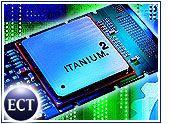
Shopping carts have become standard equipment for online vendors. But software developers — particularly those that make some of the larger off-the-shelf e-commerce packages — are upping the ante by integrating additional features into their products.
For example, as companies become more sophisticated about selling online, developers are expanding shopping cart functions to interface not only with elaborate transaction-processing systems, but also with product inventory databases, shipping management utilities, marketing recommendation engines and a host of other systems that are crucial to doing business online.
Amazon Is King
In terms of sheer quality of the shopping experience and integration with other company departments, experts agree that Amazon has long been the company to emulate. The company’s shopping cart is a big part of its success.
However, Amazon built its shopping cart system in-house, and, for the most part, that system is still not available to other companies.
“Virtually everything with Amazon is home-grown,” Gartner research director Whit Andrews told the E-Commerce Times.
Puzzle Piece
Recently, Amazon has begun moving beyond retailing. The company is aiming to make inroads as a service provider, helping paid clients set up their own commerce systems.
For the most part, however, companies are buying shopping carts as part of larger commerce packages.
According to experts, the offerings that stand out include carts that come already integrated with other Web development software, such as transaction-processing and inventory management applications. IBM’s WebSphere, for example, integrates Web design capabilities with a complete shopping cart system.
Analysts also cited off-the-shelf components that can be custom-configured and connected to other business functions as needed. Makers of these applications include BroadVision and Blue Martini.
Heavy Lifting
Gartner’s Andrews said that while the industry has become standardized to a large degree, some products still stand out. He noted that the top shopping carts not only let users select items for purchase later, but also create proprietary tags for specialized functions.
In addition, carts must process a great deal of complex pricing information for several purposes, such as calculating the cost of gift-wrapping an item or shipping multiple items to different places. Those calculations must take place in the background by transparently connecting to a database in order to glean information related to various product sizes, weights and prices.
Systems must be able to readjust inventory information if a transaction “times out” or if a customer abandons the shopping cart before completing the purchase.
Seamless Interaction
The best carts also have uninterrupted interaction with credit-checking systems, shipment tracking, warranty information, and other service-oriented requirements that emerge after the customer clicks the buy button, Andrews said.
Aberdeen Group research director Kent Allen told the E-Commerce Times that several companies have jumped into the fray, responding to increased demand for improved online processing both before and after the sale takes place.
The shopping cart is only one aspect of the complete Web purchasing experience, but it is crucial to doing business effectively online.
In today’s climate, smaller companies seem to be gaining a foothold and taking on the commerce giants. These companies include software vendors, such as E1 Group and Yantra, and application service providers like Aqueduct.
Next Step
The next step of shopping cart evolution is likely to take the form of improved integration with other back-end services. But a more important trend mightbe the increasing standardization of shopping cart software.
Meta Group vice president Gene Alvarez told the E-Commerce Times that picking the best shopping cart software is like picking the best air conditioning system for your car. Nearly every new car has one, and the basic features vary little from product to product.
“Shopping carts have become a commodity,” Alvarez said. “They’ve become a standard part of the selling platform.”
















































Is it responsible to continuously make reference to Amazon as the only viable b-to-c marketplace on the web? Certainly, Amazon has made a name for itself by creating a real buzz that has attracted many early adopters. However, how much profit are they turning? If there are profitable, private sector businesses that are turning a profit, why continue to use a venture that hasn’t created tangible returns? Is this philosophy stalling the achievement of the 10% market penetration barrier for e-commerce?